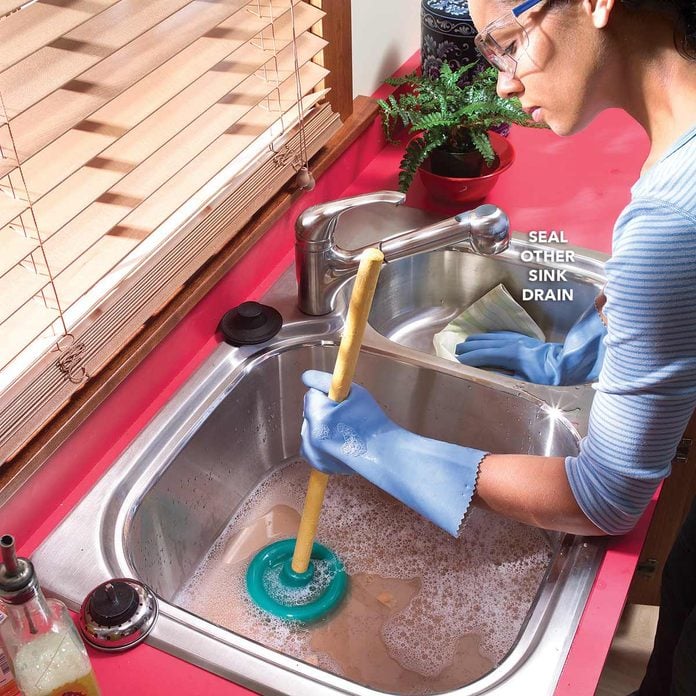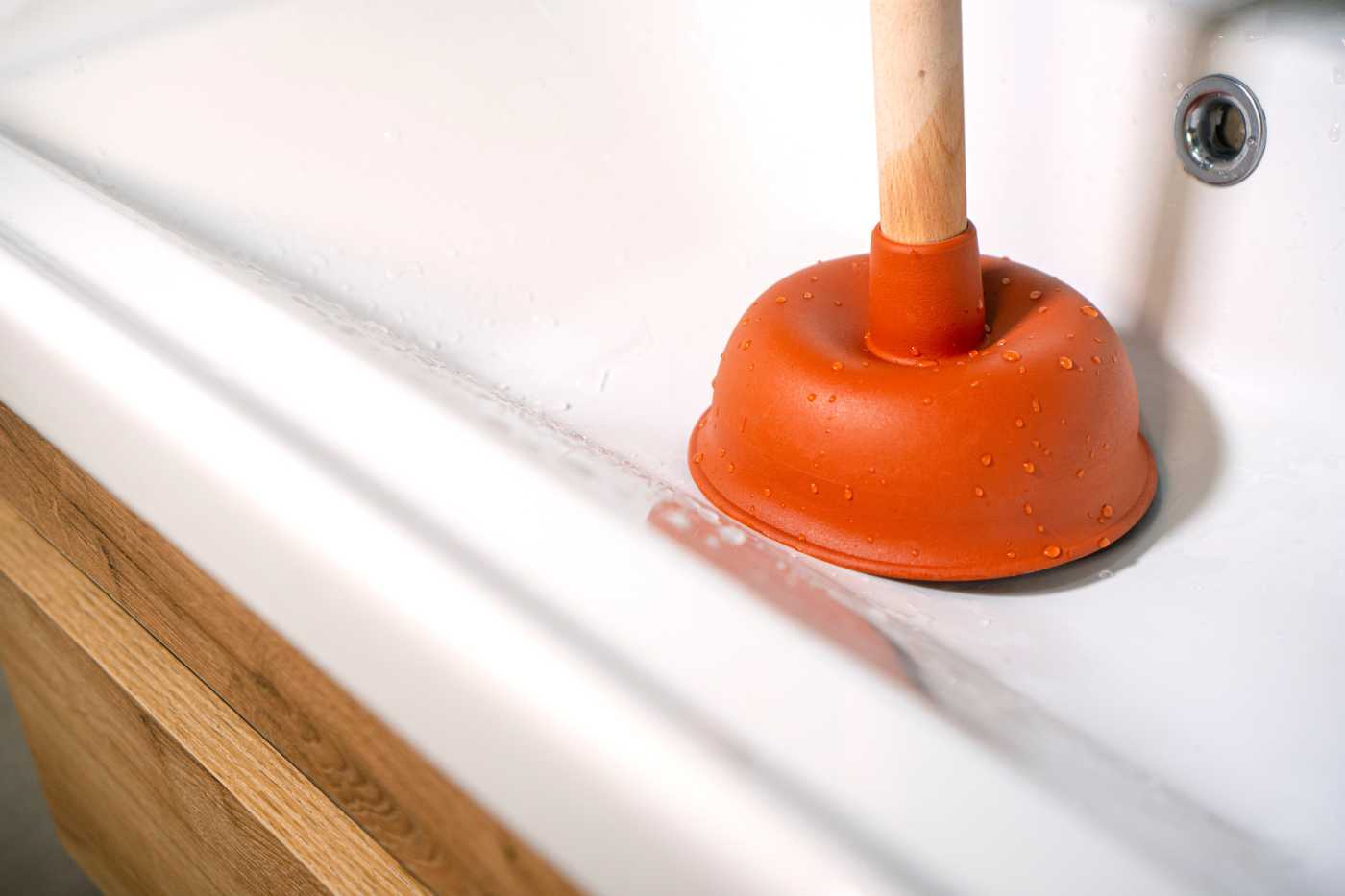What are your insights and beliefs about How to Use a Plunger to Unclog a Toilet or Drain?

Intro
Proper maintenance of house drains pipes is vital for stopping clogs and ensuring smooth water circulation. Among the key devices in every homeowner's toolkit is the plunger, alongside numerous drain cleansers developed to tackle stubborn clogs effectively. This write-up discovers how to utilize bettors and drainpipe cleaners efficiently to maintain your drains flowing openly.
Section 1: Understanding Plungers
Sorts of Plungers
There are several kinds of bettors offered, each created for various kinds of drains and obstructs. The most typical types consist of mug bettors, flange plungers, and accordion bettors.
How Plungers Job
Bettors work on the principle of creating stress and suction to dislodge obstructions. When effectively used over a drain, they develop a vacuum cleaner that can pull out particles or break up clogs.
Choosing the Right Plunger
Picking the appropriate plunger depends on the sort of drain and the nature of the blockage. Cup bettors are optimal for sinks and tubs, while flange bettors are better suited for toilets because of their design.
Typical Blunders with Bettors
Avoiding these errors makes certain effective plunging: improper seal around the drainpipe, inadequate pressure, and unclear bordering particles.
Area 2: Using Plungers Effectively
Preparation
Prior to diving, make certain the plunger covers the drainpipe entirely and forms a tight seal. Clear any type of visible particles around the drain opening.
Method
Begin with gentle plunging movements to develop suction. Increase stress progressively, using a consistent rhythm. Repeat as essential till the drainpipe clears.
Repairing Tips
If diving does not function, attempt adjusting the seal, using oil jelly for a better seal, or using a different kind of plunger.
Section 3: Recognizing Drain Cleansers
Sorts Of Drain Cleansers
Drain cleansers can be chemical or enzymatic. Chemical cleaners make use of strong chemicals to liquify blockages, while chemical cleaners make use of all-natural enzymes to break down raw material.
How Drain Cleaners Work
Chemical cleansers respond with blockages to dissolve them, while enzymatic cleansers break down natural materials like hair and oil without harming pipelines.
Security Considerations
Always put on handwear covers and eye security when utilizing chemical drain cleaners. Ensure sufficient air flow and comply with supplier directions carefully.
Eco-Friendly Alternatives
Take into consideration making use of vinegar and cooking soft drink or enzyme-based cleansers for green choices that are more secure for pipes and the atmosphere.
Area 4: Using Drainpipe Cleaners Efficiently
Application Methods
Put chemical cleaners straight into the drain opening. Allow them to work for the recommended time prior to purging with warm water. Chemical cleansers ought to sit over night.
Precautions
Prevent mixing different kinds of cleansers, as this can generate hazardous fumes. Never use chemical cleansers along with a plunger, as spilling can take place.
Dealing With Stubborn Obstructions
For persistent blockages, take into consideration using a plumbing snake or calling a professional plumbing to stop damage to pipelines.
Conclusion
In conclusion, comprehending exactly how to make use of plungers and drainpipe cleansers successfully is important for preserving healthy and balanced plumbing systems. By picking the right tools and methods, home owners can take on minor clogs and stop major plumbing concerns down the line.
How to Use a Plunger to Unclog a Drain
The humble plunger is a simple yet effective tool for breaking clogs in sinks, tubs and toilets. This handy tool is easy to use. You can make the most of its power if you understand how it works. Ready to dive in? Here’s what you need to know.
Safety First!
Never use a plunger with drain chemicals. Water will splash as you work, and the chemicals can spatter, burning skin and eyes. It’s a good idea to use rubber gloves and wear safety goggles when you work on a clog.
Choose the Right Tool for the Job
Plungers come in two different styles. Sinks, bathtubs and showers require a cup plunger. Like its name suggests, the rubber end is shaped like a cup. Use a flange plunger on toilets. These plungers have a rubber funnel extending from the cup. A plunger needs to be big enough to cover the drain.
Ready, Set, Plunge!
Coat the rim: Coat the plunger rim with petroleum jelly. This helps make a better seal.
Block outlets: Hold a wet rag over nearby outlets such as the overflow vent or the drain in a second sink.
Release air: Insert the plunger at an angle into the water. Water will displace air in the cup. A water-filled cup is more forceful than one filled with air.
Keep the plunger upright: Hold the plunger perpendicular to the drain. Use fast, forceful strokes, but make the first stroke gentle. The first stroke can create a splash if the cup still contains air. Thrust the plunger 15 to 20 times.
Snap off the plunger: The final stroke should be a strong upward motion that ends when the plunger snaps off the drain.
Repeat the process: you may need to repeat this sequence several times. When the water drains away, your work is done. High-five! https://plumbernw.com/blog/how-to-use-a-plunger-to-unclog-a-drain/

Application Methods
Put chemical cleaners straight into the drain opening. Allow them to work for the recommended time prior to purging with warm water. Chemical cleansers ought to sit over night.
Precautions
Prevent mixing different kinds of cleansers, as this can generate hazardous fumes. Never use chemical cleansers along with a plunger, as spilling can take place.
Dealing With Stubborn Obstructions
For persistent blockages, take into consideration using a plumbing snake or calling a professional plumbing to stop damage to pipelines.
Conclusion
In conclusion, comprehending exactly how to make use of plungers and drainpipe cleansers successfully is important for preserving healthy and balanced plumbing systems. By picking the right tools and methods, home owners can take on minor clogs and stop major plumbing concerns down the line.
How to Use a Plunger to Unclog a Drain
The humble plunger is a simple yet effective tool for breaking clogs in sinks, tubs and toilets. This handy tool is easy to use. You can make the most of its power if you understand how it works. Ready to dive in? Here’s what you need to know.
Safety First!
Never use a plunger with drain chemicals. Water will splash as you work, and the chemicals can spatter, burning skin and eyes. It’s a good idea to use rubber gloves and wear safety goggles when you work on a clog.
Choose the Right Tool for the Job
Plungers come in two different styles. Sinks, bathtubs and showers require a cup plunger. Like its name suggests, the rubber end is shaped like a cup. Use a flange plunger on toilets. These plungers have a rubber funnel extending from the cup. A plunger needs to be big enough to cover the drain.
Ready, Set, Plunge!
Coat the rim: Coat the plunger rim with petroleum jelly. This helps make a better seal. Block outlets: Hold a wet rag over nearby outlets such as the overflow vent or the drain in a second sink. Release air: Insert the plunger at an angle into the water. Water will displace air in the cup. A water-filled cup is more forceful than one filled with air. Keep the plunger upright: Hold the plunger perpendicular to the drain. Use fast, forceful strokes, but make the first stroke gentle. The first stroke can create a splash if the cup still contains air. Thrust the plunger 15 to 20 times. Snap off the plunger: The final stroke should be a strong upward motion that ends when the plunger snaps off the drain. Repeat the process: you may need to repeat this sequence several times. When the water drains away, your work is done. High-five! https://plumbernw.com/blog/how-to-use-a-plunger-to-unclog-a-drain/

Do you like more info about How to Unclog Your Sink with a Plunger? Try leaving a remark down the page. We'd be pleased to hear your opinions about this piece. Hoping that you visit us again before long. Don't hesitate to take the time to distribute this content if you appreciated it. Thank you for going through it.
Click Here